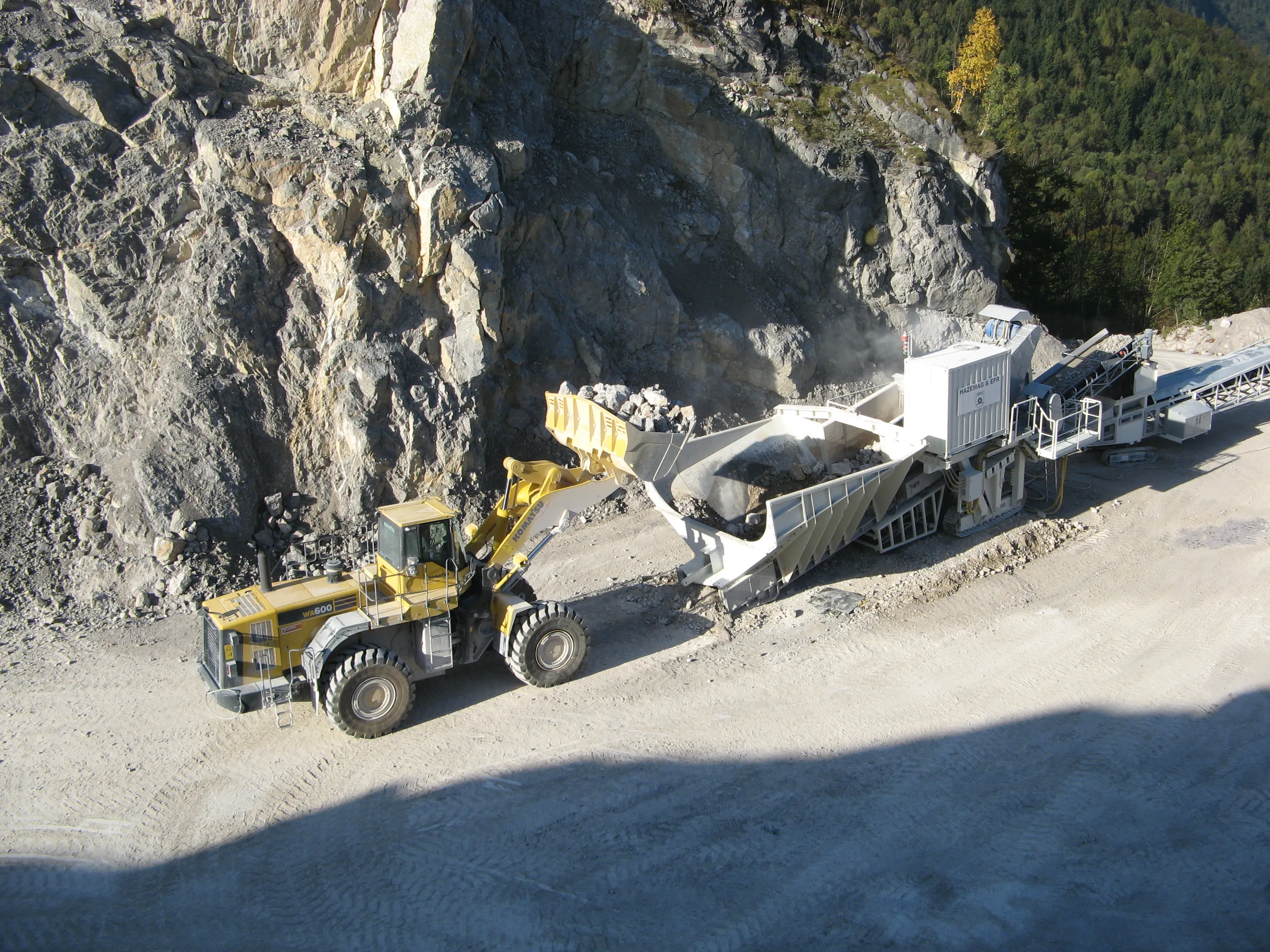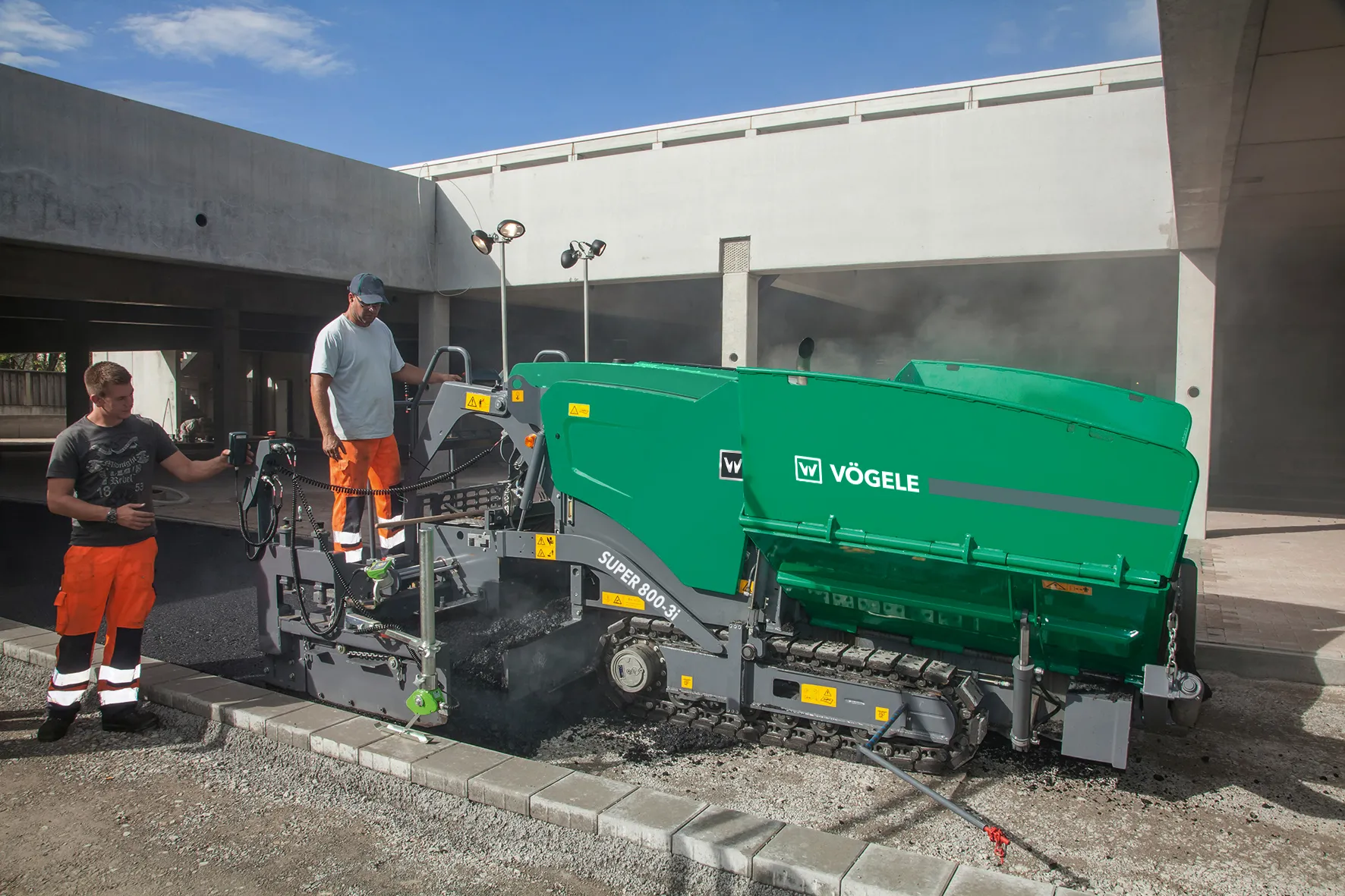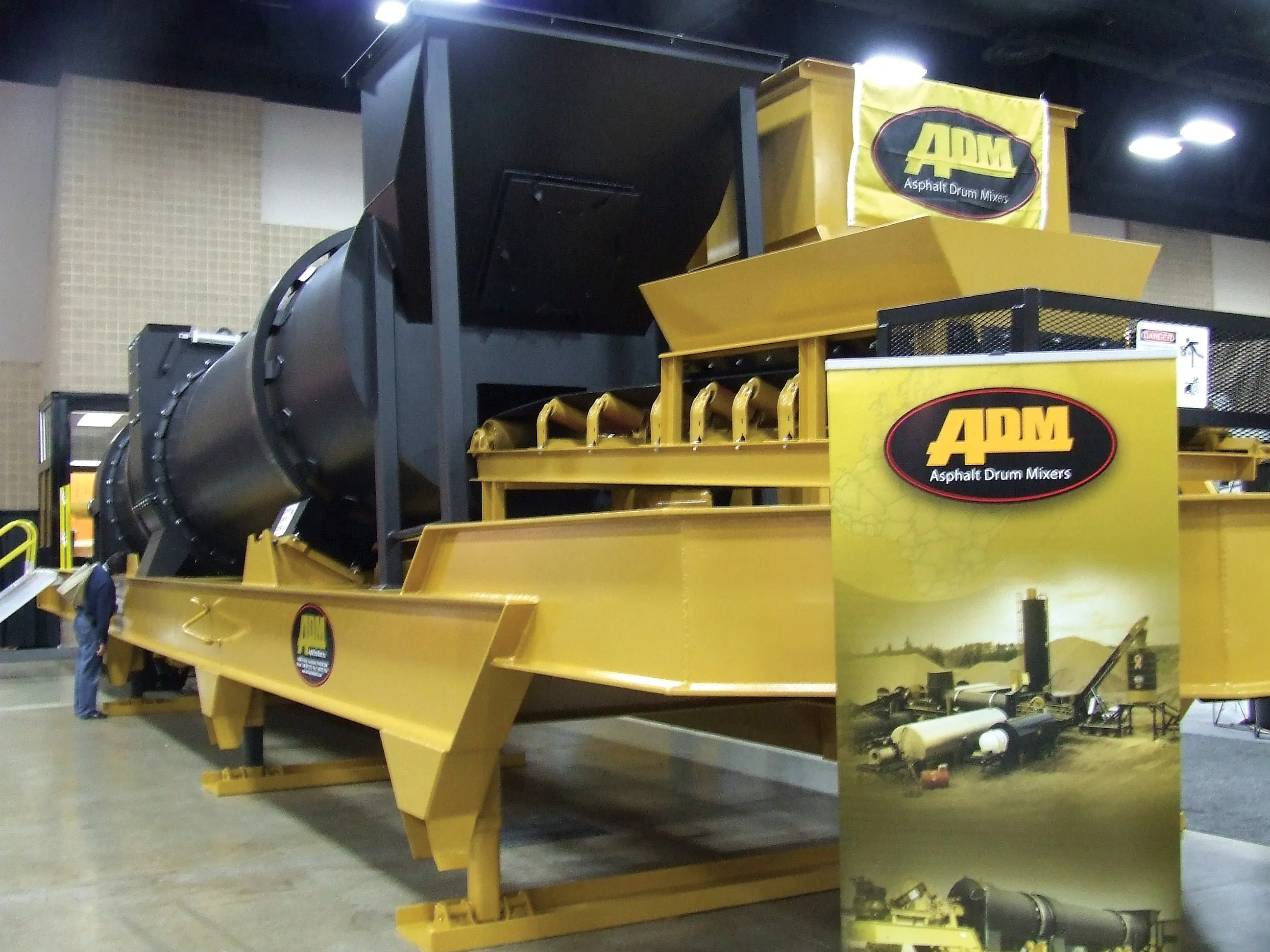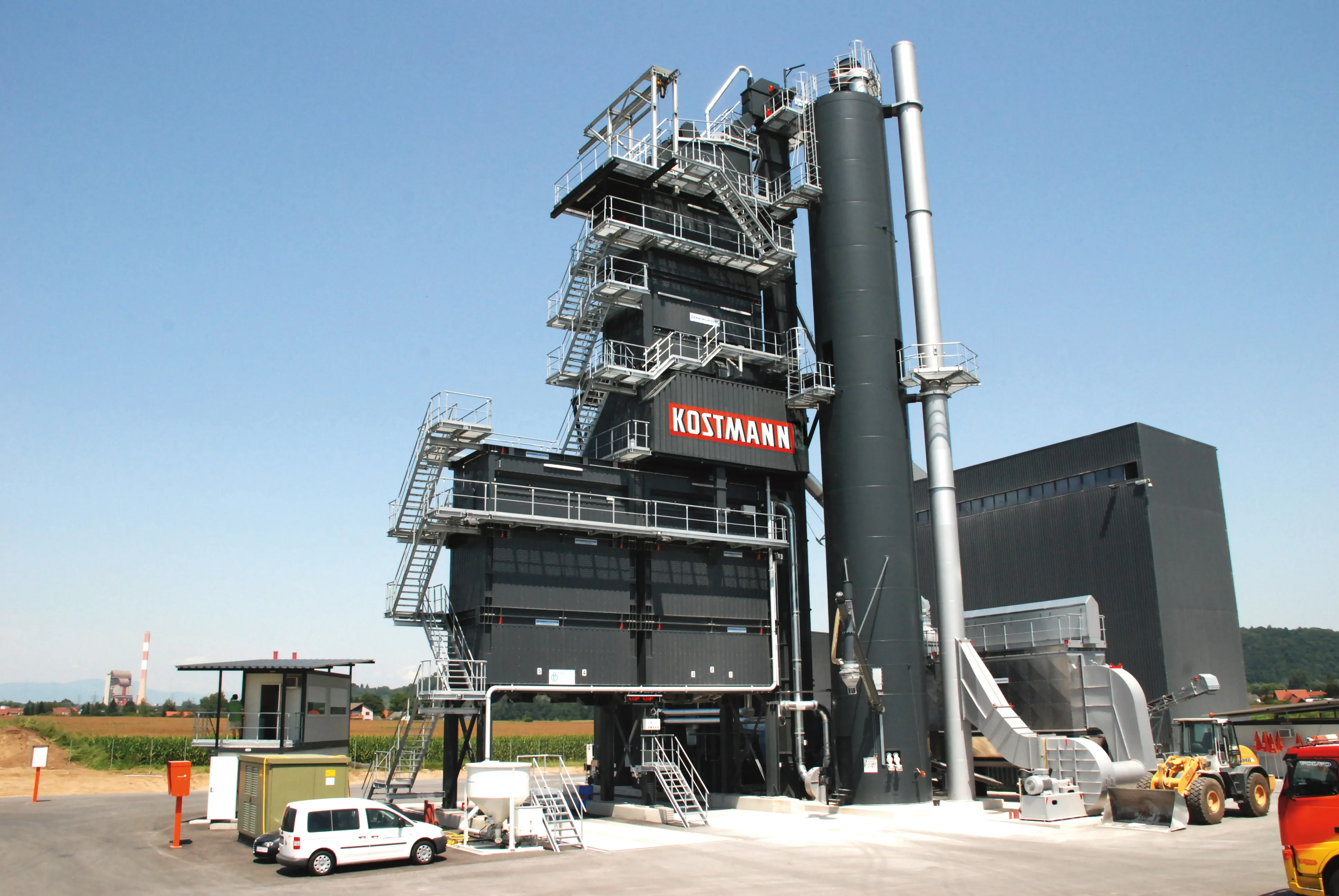Hazemag has supplied what it claims is the first semi-mobile impact roll crusher plant in Austria to Zementwerk Leube, one of the country's leading companies in the building materials industry. The compact, semi-mobile design 600-800tonnes/hour limestone crushing plant includes the integration of a feeder grate as a primary screen. "Even with high throughput and the large feed size of up to 1.2m the end product had to have a final crush size of 0-250mm with a minimal amount of fines production in the final
February 6, 2012
Read time: 2 mins

The compact, semi-mobile design 600-800tonnes/hour limestone crushing plant includes the integration of a feeder grate as a primary screen.
"Even with high throughput and the large feed size of up to 1.2m the end product had to have a final crush size of 0-250mm with a minimal amount of fines production in the final product," says Hazemag.
The plant utilises a 15m² feed hopper and is fed using front end loaders, and because of the horizontal flow technology neither a bench edge or loading ramp is required for feeding.
According to Hazemag, it is simple to use a front end loader to reposition the plant in less than 30 minutes without any problems or any special pad to set the unit on.
Material is conveyed from the feed hopper via a solid chain conveyor (KF 1200) to the crushing chamber. The roller screen, which has a working width of 1.4m and a gap setting of 110mm, is integrated in the chain conveyor and guarantees a primary screening of up to 120mm. Feed of over 120mm is crushed in the impact roll crusher to a conveyor-sized dimension.
Crushed limestone is then fed to the discharge belt of the crushing plant which transports the material via a downstream mobile conveyor plant to the secondary crushing plant.








